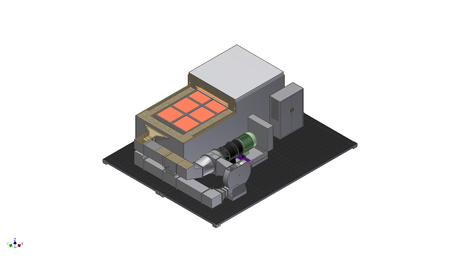Energy storage system based on sand

Latent Heat Storage has developed a low-cost thermal energy storage system based on the latent heat properties of silicon derived from sand.
The device, known as the Thermal Energy Storage System (TESS), has been designed to overcome the intermittent nature of renewable energies such as wind and solar by providing a stable energy output suitable for base load power. It stores electricity as thermal energy by heating and melting containers full of silicon, with the high latent heat capacity and melting temperature of silicon making the device ideal for the storage of large amounts of energy.
“Renewable energy sources generally spill energy due to supply and demand mismatches, so we’ve designed the TESS device to capture this ‘spilt’ energy for later use or release to the grid,” said Latent Heat Storage CEO Jonathan Whalley.
“Our system also means that energy consumers will be able to purchase stored electricity off-peak at low tariffs, which ultimately means cheaper energy.”
The TESS device can handle an increasing workload, from 500 W applications through to an industrial scale of up to several hundred megawatt hours — enough to power about 7000 homes for a day. In addition, the device is small enough to fit inside a 6-metre shipping container but is readily scalable as demand requires.
TESS is suitable for grid and off-grid applications. It can be integrated anywhere within an electricity network and is suitable for commercial and industrial businesses where heat and electricity are required.
Now, after three years of research and development, the TESS device is being developed in South Australia with the help of a $400,000 government grant to take it from prototype to commercial reality. The grant has been matched by Latent Heat Storage shareholders to generate $800,000 of total project funding.
The prototype is being developed in partnership with Adelaide-based engineering consultancy ammjohn and final-year engineering students at the University of Adelaide. It is anticipated to be completed in early 2016, at which point it will be showcased to potential clients around the world.
“We are developing an energy storage system to meet market demand,” Whalley said.
“We anticipate that this will result in exponential growth of the energy storage market worldwide.”
$25m grant supports cleaner cement production
The upgrades will enable the Berrima Cement Works kiln to source up to 60% of its energy from...
$39m boost to NSW's EV fast charging network
Applications are open for Round 4 of the NSW Government's EV fast charging grants program,...
Agreement unites clean energy providers
Wind and water energy come together as Aula Energy signs a long-term power purchase agreement...










